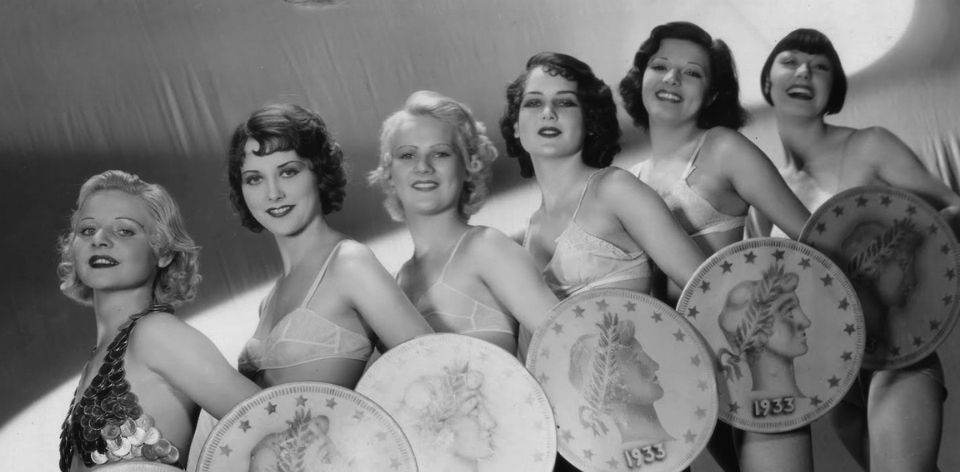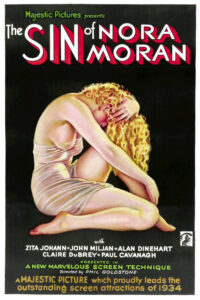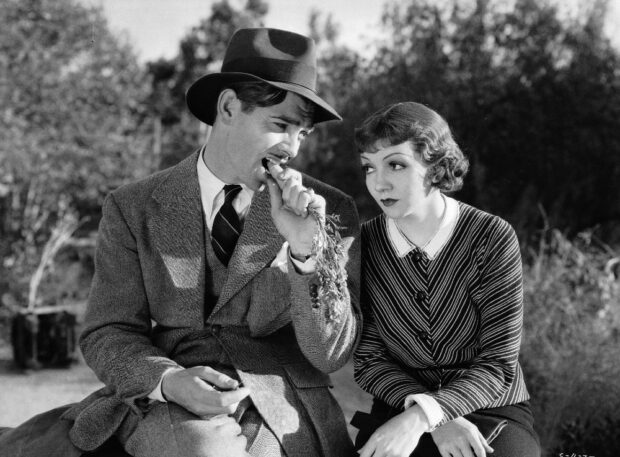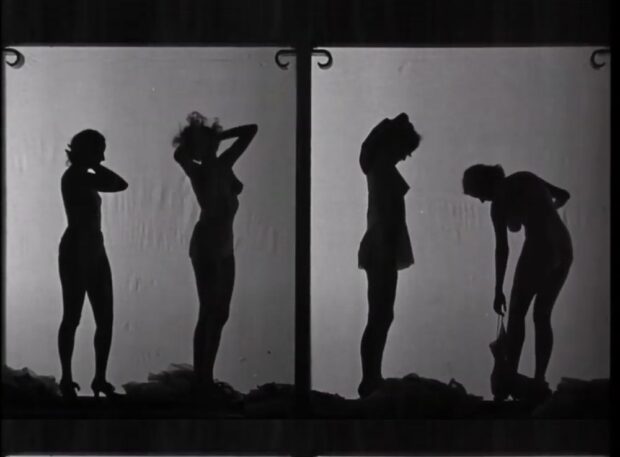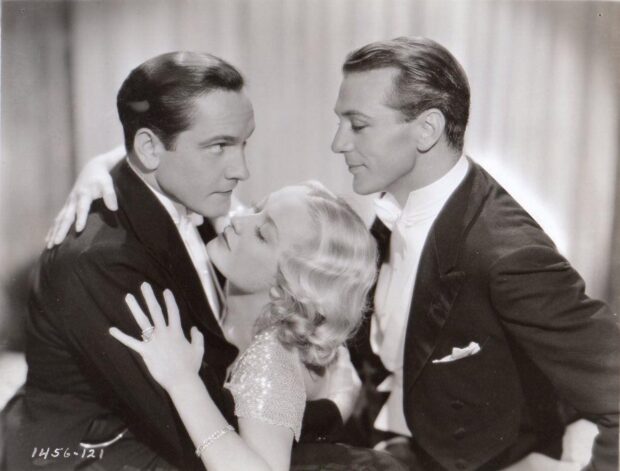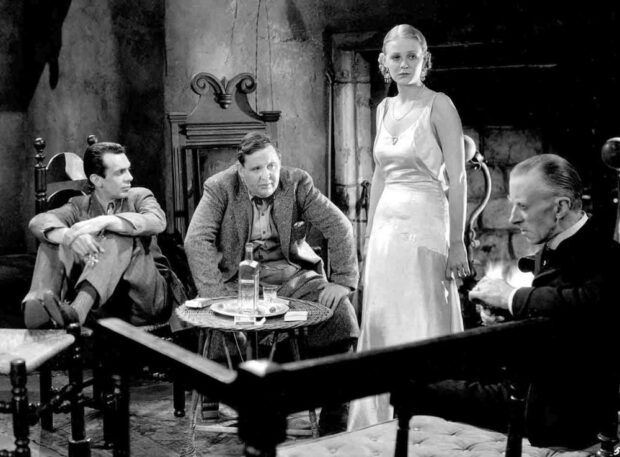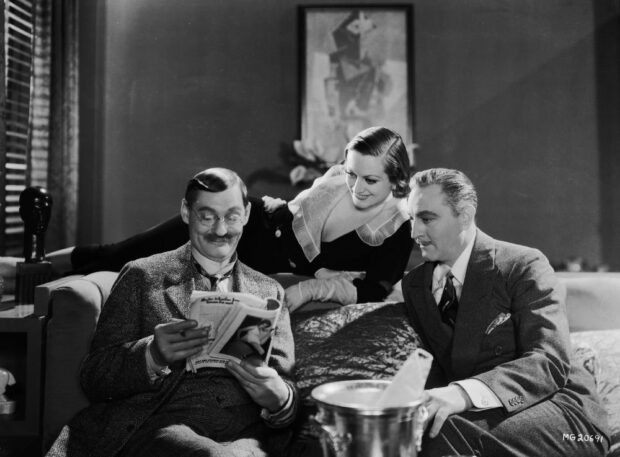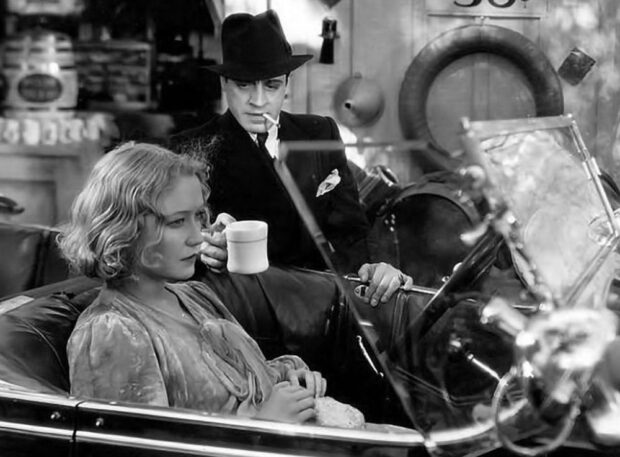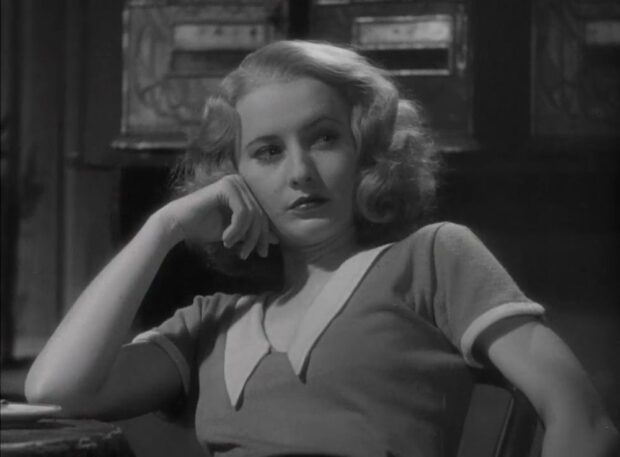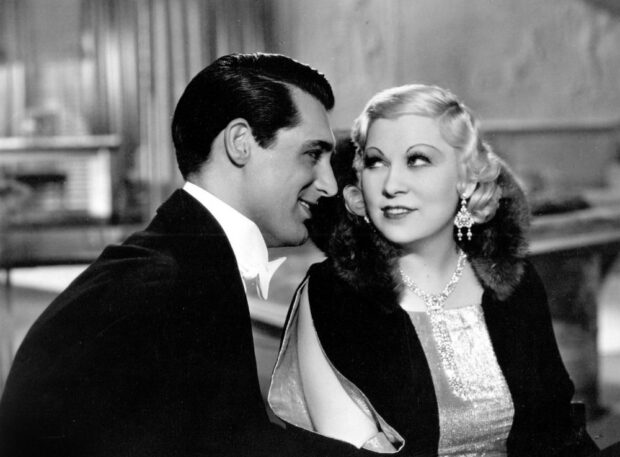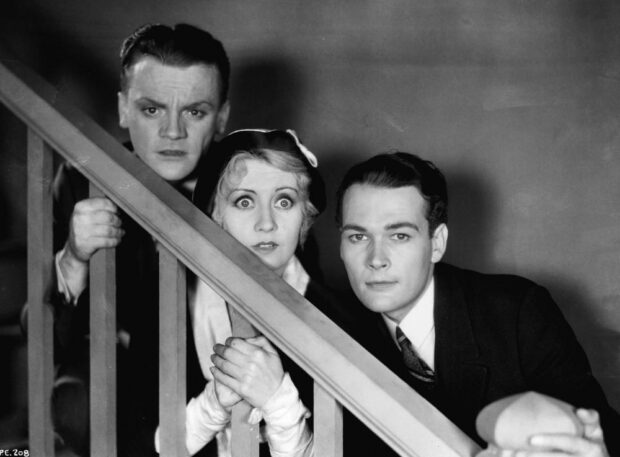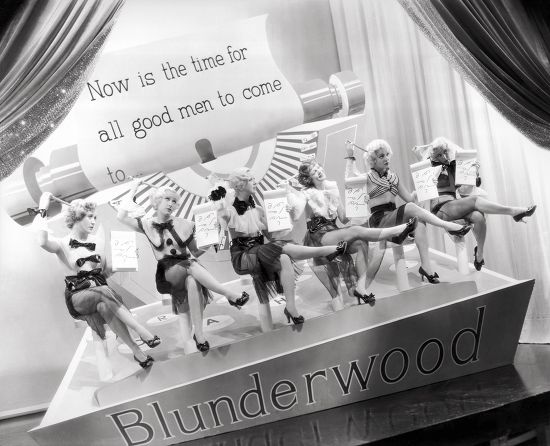Following Christmas, Pre-Code April is the most wonderful time of the year. It’s a chance where we get to spend some time with bad eggs, swell dames, chislers and well-heeled suckers – and go for them in a big way, see?
Created by Matthew Turner (aka FilmFan1971) as an answer to #Noirvember, in which film fans spend a month watching a noir film a day, #PreCodeApril has become an annual celebration and a way of exploring the films of a very particular era.
So, what is pre-Code cinema? Generally speaking, it’s those films that came out between the introduction of sound films in 1929 and the adoption of the Motion Picture Production Code censorship guidelines (popularly known as the “Hays Code”) in 1934. Will H. Hays, a former Postmaster General, was recruited by the studios in 1922 to help clean up their “Sin City,” citing incidents like the Fatty Arbuckle trial as indicators of Hollywood’s moral cesspool.
The Code itself was introduced in the late 1920s and, although supported by various moral campaigners, it didn’t come into force until 1934. The Code was very loosely enforced in this interim five-year period. After all, with the Depression and Prohibition, movies offered a cheap escape for most people. So, Hollywood pushed things as far as they could in terms of sex, bawdy humour, salacious themes, insane set designs and naughty winks at the audience. It came very much from a vaudeville tradition of ‘anything goes,’ and some studios (such as Paramount) even set up a secondary facility in New York so that they could use Broadway performers between shows.
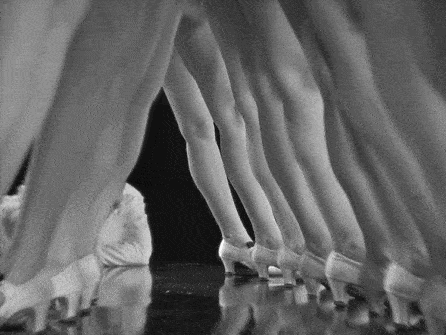
Although ‘pre-Code’ spanned a number of genres and styles, the films we are talking about are all linked by their conscious pushing of the rules and some amazing creativity to get around the soft-censorship. Iconic musicals Footlight Parade (1933), 42nd Street (1933) and Gold Diggers of 1933 (1933) not only showcased Busby Berkley’s insane geometric dance sequences, but strongly suggested sex and nudity. Indeed, adult content and themes – ranging from prostitution, racketeering, abortion and throuples – were common in this era of cinema. It allowed stars such as Mae West, the Marx Brothers, W.C. Fields, Miriam Hopkins, Barbara Stanwyck, James Cagney, Clark Gable, Bette Davis, Joan Blondell, and Edward G. Robinson to either get their start or (re)define their images.
It all came to an end in 1934 with the proper enforcement of the Code, one that gave censorship guidelines – forbidding everything from “pointed profanity,” “licentious or suggestive nudity,” miscegenation, drugs, or a “ridicule of the clergy” – right up until the New Hollywood era of the late 1960s. Pundit uproar to films like Baby Face (1933), Red Headed Woman (1932), The Sign of the Cross (1932) and the notorious The Story of Temple Drake (1933) are largely said to have pushed to Code to the fore, bringing this brief wild west era of studio freedom to an end.
Which begs the questions: why do pre-Code films continue to appeal, and why have people rediscovered them now? Some of of it is, of course, the costumes, the cheeky wordplay and the irreverent scripts. Yet part of their longevity might be linked to the era we’re living through, with a once in a generation pandemic, a recent global finance crisis and looming war all part of the same tapestry that led to these escapist films being made in the first place. Who would have thought that we would find such joyful escapism in the 1930s Depression?
Looking for a place to start? Turner has put together a terrific Letterboxd list of almost 1,000 films to choose from. There’s a surprising number of films that are available to modern viewers. For the ones not released on disc, specialised streaming services like Criterion Channel, TCM or Kino Now have regular programming dedicated to the era. Hell, YouTube is filled with pre-Code love, especially given that there’s a number in the public domain. For my money, here’s some essential films you really need to see.
It Happened One Night (1934)
Quite possibly the quintessential pre-Code film, albeit coming at the very end of the era. A renegade reporter (Clark Gable) and a young heiress (Claudette Colbery) meet on a bus heading for New York, and end up stuck with each other when the bus leaves them behind at one of the stops. One of three films to take out the top 5 Academy Awards, it’s the exemplar for every screwball rom-com for the next 90 years.
Gold Diggers of 1933 (1933)
Come for the Busby Berkeley dance numbers but stay for the charming screwball banter, cheeky pre-Code subversion, and the dynamite combination of Joan Blondell, Ruby Keeler, Aline MacMahon and Ginger Rogers. There was a long series of sequels and follow-ups, but it was rarely bettered.
Design for Living (1933)
Miriam Hopkin pioneers pre-Code throuples in Ernst Lubitsch’s delightful follow-up to Trouble in Paradise (by way of his short segment in If I Had a Million). While everything but the bones of Noël Coward’s original play may be absent, not to mention a very stagey pacing and set-up remaining, it’s got its own sly wit and scandalous humour. It’s a gentleman’s agreement!
That Old Dark House (1932)
Director James Whale (Frankenstein, Bride of Frankenstein, Invisible Man) delivers a comedy-horror film that is now thought to be a parody and a reinvention of the genre. Filled with memorable character types that regularly play against that mould, I found myself in the odd position of siding with the chaotic Saul by the end of the picture. Just terrific.
Grand Hotel (1932)
“Always the same. People come. People go. Nothing ever happens.” This opening and closing dialogue model (delivered by Lewis Stone) sets the tone for a model that has been imitated — in everything from International House through the entire filmography of Wes Anderson — but rarely bettered. Every moment is filled with fascinating characters with lives that stretch well beyond the handful of moments we get to share with them on screen. The stacked cast includes Greta Garbo, John Barrymore, Joan Crawford, Wallace Beery and Lionel Barrymore.
The Story of Temple Drake (1933)
The rape and revenge film was so notorious at the time, some consider this to be one of the reasons that the Hays Code was so strictly enforced the following year. In fact, Will H. Hays had already objected to any adaptation of William Faulkner’s Sanctuary (the book on which it was based). It’s one of the best of many excellent performances from Miriam Hopkins, and while the comparatively tame ending deviates from the novel, it’s still a powerful piece of storytelling at the turning point of censorship in Hollywood.
Baby Face (1933)
You can practically hear Will H. Hays screaming ‘Bring me my Code!’ under every frame of footage. Pre-Code queen Barbara Stanwyck quite literally sleeps her way to the top of the skyscraper in a film filled with sex, murder and suicide. You know, all the good pre-Code stuff. For context, Stanwyck starred in this, The Bitter Tea of General Yen, and prison film Ladies They Talk About in 1933 alone. She truly was the closed-fist big hitter of pre-Code cinema.
I’m No Angel (1933)
“Always remember, honey, a good motto is: take all you can get and give as little as possible. Don’t forget, honey: never let one man worry your mind… find ’em, fool ’em, and forget ’em.” Mae West may play to a formula, but so does maths – and they both talk a lot about figures. West and Cary Grant’s interplay in this film is everything, and if you’re going to watch one West/Grant joint, make it this one.
The Public Enemy (1931)
William A. Wellman’s film is highly regarded in its own right, but it is the kind anti-heroic gangster saga that Hays and his followers wanted to stamp out of existence. James Cagney stars in one of his most famous roles, not least of which is for a controversial scene in which he angrily smashes a half grapefruit into his girlfriend’s face (Mae Clarke). While you may not think of them in the same terms as Astaire and Rogers or Hepburn and Tracey, stars Cagney and Joan Blondell made seven films together — and they are all pre-Code gems. (Footlights Parade is also highly recommended).
Murder at the Vanities (1934)
What can be said about a musical murder mystery that contains separate numbers called ‘Sweet Marijuana’ and ‘The Rape of Rhapsody.’ Mitchell Leisen’s release is the last kick of the pre-Code era – mere weeks before the Hays Code really came into effective force – and naturally, it’s a long-legged and high-heeled kick. From the opening salvo of a barely clothed chorus line, we get multiple murders, women posed as furniture, a side-plot about Vienna and dance sequences that would make Busby Berkeley say ‘Eh, that’s a little much.’ Ann Sheridan, Lucille Ball, and Alan Ladd turn up in the chorus, but would you notice them behind a naked woman popping out of a flower while Kitty Carlisle sings about drugs?
Further reading and watching
Want to know more about this fascinating era? A good place to start is Danny Reid’s wonderful Pre-Code.com, filled with recommendations and trivia.
Mark A. Vieira’s Sin in Soft Focus: Pre-Code Hollywood (1999) is an excellent visual primer filled with essays and high quality photos from the era. More recently, Vieira has added Forbidden Hollywood: The Pre-Code Era (1930-1934): When Sin Ruled the Movies (2019) to his bibliography.
There’s some great documentaries too. Complicated Women (2003) explores the actresses of the pre-Code age, while Warner’s Thou Shalt Not: Sex, Sin and Censorship in Pre-Code Hollywood (2008) does exactly what it says on the tin. Why Be Good? Sexuality & Censorship in Early Cinema (2007) is also an overview of sexuality on screen from the silent era to the introduction of the Code.
You can also check out my Pre-Code April 2021 and Pre-Code April 2022 lists on my Letterboxd.

